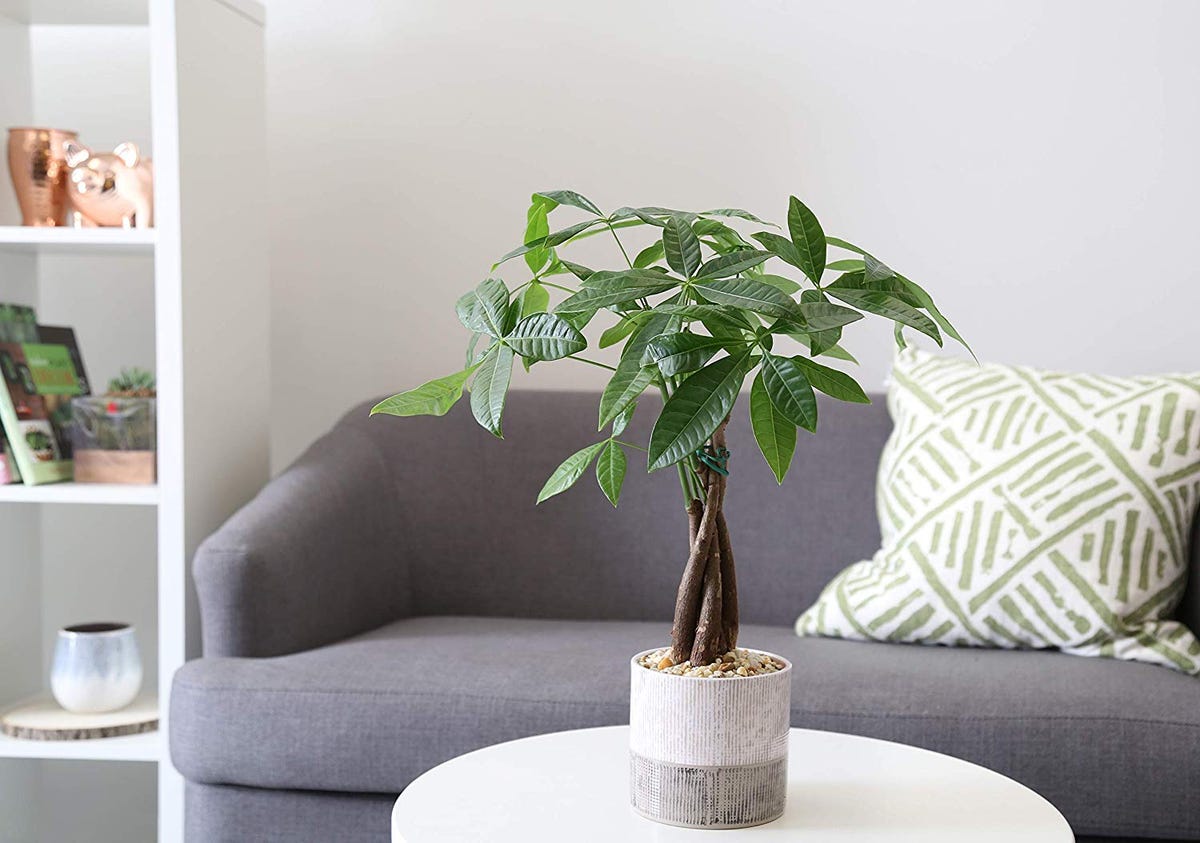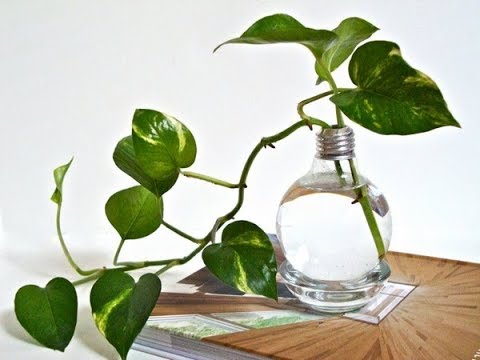Water money plant in summer every 7 to 10 days. Money plant is one of the most popular indoor plants.
It’s low-maintenance and offers great health benefits by keeping the air fresh. It’s also believed to bring good fortune and money to the owners. However, caring for the money plant can be a bit challenging, especially during the summer season.
During summer, the extreme heat can cause the plant to dry and wilt quickly. On the other hand, providing too much water can cause root rot and damage the plant. Therefore, it’s essential to water the money plant properly in summers. This article will guide you through the correct way of watering a money plant in summer, so you can enjoy its beauty and benefits all year round.

Credit: www.housebeautiful.com
Understanding Money Plants
Money plants are one of the easiest indoor plants to take care of, and they are widely cherished by plant lovers worldwide. In the summer, the watering frequency of money plants needs closer attention as high temperatures can significantly affect their growth and appearance.
What Is A Money Plant?
Money plants, scientifically named epipremnum aureum, are the most common indoor plants that are perfect for beginners. They are native to the solomon islands and belong to the araceae family. Money plants have heart-shaped leaves that are typically green but may also have yellow or white markings.
These plants are popularly known for their air-purifying qualities and the ability to bring good luck and fortune.
Types Of Money Plants Found In Summer
In summer, there are several species of money plants that you can choose from, such as:
- Golden pothos: This is the most common type of money plant and is perfect for beginners. Its variegated golden-yellow leaves add a beautiful touch to any indoor space.
- Jade pothos: This attractive plant has heart-shaped, variegated leaves in green and white colors. It is also known as devil’s ivy.
- Marble queen: Characterized by its stunning marbled leaves in green and creamy white colors, this plant is perfect for adding a pop of color to your indoor space.
- Neon pothos: This is the most visually striking money plant with its electric neon green leaves. It flourishes in indirect sunlight and humid conditions, making it perfect for summer.
What Are The Benefits Of Having A Money Plant?
Apart from their aesthetic appeal, money plants have several benefits that make them a popular choice among plant enthusiasts, including:
- Air purification: Money plants have the ability to absorb toxins like formaldehyde, benzene, and xylene from the air, making it cleaner and healthier to breathe.
- Luck and prosperity: According to vastu shastra and feng shui, money plants attract positive energies that bring wealth, good luck, and prosperity into the household.
- Low maintenance: Money plants require minimal care and attention, making them perfect for busy individuals who want to enjoy the benefits of indoor plants without the extra effort.
- Stress relief: Studies have shown that spending time around plants can significantly reduce stress levels, and money plants are no exception.
Understanding money plants and their watering needs during summer is crucial for their growth and development. With proper care and attention such as choosing the right species, location and benefits, you can enjoy the tranquillity and beauty of money plants for years to come.
The Importance Of Watering Summer Money Plants
Money plants have become one of the most popular indoor plants in recent times due to their attractive appearance and easy maintenance. Among several factors that contribute to their successful growth, watering plays a vital role. We will discuss the importance of watering money plants in summers and how over or under-watering can affect their health.
So, let’s get started with the first heading.
How Does Proper Watering Affect The Health Of Money Plants?
Adequate watering helps in the growth and development of plants. Likewise, when it comes to money plants, proper watering is essential to maintain their healthy growth. Following are some key points that explain how:
- Watering helps in the absorption of nutrients by the plant roots
- It helps in maintaining the turgidity (rigidity) of leaves and stems, which contributes to their upright growth.
- Watering prevents the leaves from becoming dry and brittle.
- It helps to regulate the temperature around the plant.
What Happens To Money Plants When Over Or Under-Watered?
Over or under-watering can affect the health of money plants and even lead to their death. Let’s learn how:
Over-Watering
- Over-watering causes root-rot that can kill the plant if not treated promptly.
- Water-logged soil can lead to the accumulation of harmful chemicals due to decomposition processes, which can further harm the plant’s roots.
- Over-watering can create a breeding ground for pests and insects like fungus gnats, which can damage the plant.
Under-Watering
- Under-watering can lead to stress, wilted leaves and even death of the plant.
- Persistent under-watering makes leaves yellow and brittle.
- Under-watering exposes the plant to environmental stress and makes it more susceptible to pest attacks.
Watering is a critical aspect of money plant maintenance, especially in summers. Proper watering helps in maintaining healthy growth, while over or under-watering can adversely affect plant health. By keeping these insights in mind and following a regular watering schedule, you can enjoy beautiful and healthy money plants.
Factors Affecting How Often To Water Money Plant In Summer
Summer is a great time for your money plant to flourish, but managing its watering frequency can be a tricky task. Watering your money plant incorrectly can result in its demise. However, watering it just right will keep it healthy and thriving.
Here are three factors affecting how often to water your money plant in summer and how to manage them.
Humidity
Humidity has a considerable impact on how often you should water your money plant. If the humidity is high in your area, the rate of moisture loss will be slower, enabling your plant to retain moisture for a longer time.
In contrast, if the humidity is low in your area, evaporation will occur very rapidly, and your plant will require more frequent watering. Therefore, before watering, be sure to check the humidity levels in your area.
Soil Composition
The soil you use plays a crucial role in determining your plant’s watering schedule. If you use heavy soil that doesn’t drain correctly, your plant’s soil will become waterlogged and suffocate the roots. On the other hand, soil that drains too quickly will lead to your money plant becoming dehydrated and malnourished.
To avoid these issues, use a well-draining soil mix that is rich in organic matter. This will allow water to move through the soil easily while retaining the required moisture for longer periods, reducing the plant’s water requirements.
Plant Size And Age
The size and age of your money plant will also affect how often it needs watering. Smaller and younger plants don’t require as much water as older and more massive plants. The reason behind this is that older and more mature plants have a more extensive root system and require more water to sustain themselves.
To determine if your money plant needs watering, feel the soil with your finger. If it’s dry to the touch, it’s time to water your plant. If it’s still moist, you can wait for a little longer before watering.
Watering your money plant isn’t a one-size-fits-all task. Instead, it requires monitoring and fine-tuning based on factors such as humidity, soil composition, and plant size and age, among others. By being mindful of these factors, you’ll have a beautiful and healthy plant that adds a touch of elegance to your home or workspace.
How Often Should You Water Money Plant In Summer?
Money plants are popular houseplants known for their easy care, air-purifying qualities, and attractive appearance. However, one of the most frequently asked questions by money plant enthusiasts is how often they should water their plants in the hot summer months.
Here are some guidelines to help you determine the right frequency for your money plant:
Recommended Watering Frequency For Different Types Of Money Plants
Different types of money plants require different watering regimes. Here are some guidelines:
- Pachira aquatica: Water the plant every three to four days in the summer, depending on humidity levels. This plant can tolerate a wider range of watering frequencies.
- Epipremnum aureum: Water the plant once every five to seven days, making sure to not let the soil dry out completely.
- Crassula ovata: Water the plant once every 10-14 days, allowing the soil to dry out slightly between watering sessions.
How To Tell If Your Money Plant Needs Water
It’s essential to keep your money plant hydrated, but it’s also important not to overwater it, which can lead to root rot. Here are some signs that your money plant needs watering:
- The soil is visibly dry, and the plant’s leaves start to wilt or droop.
- The soil feels dry to the touch when you insert your finger about an inch into the soil.
- The leaves start to turn yellow or brown and fall off the plant.
Make sure to water your money plant thoroughly and avoid letting it sit in standing water.
Now that you know the recommended watering frequency for different types of money plants and how to tell if your money plant needs water, you can keep your plant healthy and happy throughout the summer months. Happy gardening!
Best Practices For Watering Money Plants In Summer
How To Water Your Money Plant Correctly
Watering your money plant is critical to keep it healthy and vibrant. During the hot summer months, the plant becomes dehydrated more quickly, so it’s essential to follow these guidelines:
- Use room temperature water to prevent shocking the roots.
- Water the plant thoroughly, soaking the soil completely.
- Make sure the pot has good drainage to prevent waterlogging.
- Allow the soil to dry out a bit before you water it again.
Common Mistakes To Avoid While Watering Your Money Plant
Overwatering or underwatering can harm your money plant, so it’s vital to avoid these mistakes:
- Do not water the plant daily, as it can cause water to accumulate in the soil, which can lead to root rot.
- Do not let the soil get completely dry, as it can cause dehydration and damage to the roots.
- Do not use tap water that contains chlorine; the chemical can harm the plant.
Tips For Maintaining A Healthy, Well-Hydrated Money Plant Throughout The Summer
Keep your money plant in optimal condition throughout the summer with these tips:
- Use a pot with good drainage to ensure that excess water can escape, preventing overwatering.
- Place the plant in a shaded area to prevent dehydration due to direct sunlight exposure.
- Mist the plant or wipe the leaves with a damp cloth to increase humidity and keep the plant hydrated.
- Add a layer of mulch around the soil to prevent evaporation and keep the soil hydrated.
Frequently Asked Questions Of How Often To Water Money Plant In Summer
How Often Should Money Plant Be Watered During Summers?
Watering money plants must be done when the topsoil feels dry. In summer, this is roughly once a week. Overwatering or underwatering may cause damage, so always check soil moisture before watering.
What Happens If A Money Plant Is Overwatered In Summer?
Overwatering will cause the roots to rot and will deprive the plant of oxygen, leading to slow growth, yellowing of leaves, wilting of the stem and a general decline in health. The top of the soil may appear damp, and the plant may emit an odor.
Is It Better To Underwater Than Overwater Money Plants In Summer?
Money plants are quite resilient and can tolerate some periods of drought. However, it is still preferable to avoid frequent underwatering as it can lead to dry and brittle leaves. Stick to the recommended watering frequency to maintain optimal growth.
Can Tap Water Damage Money Plants In Summers?
Tap water can damage money plants due to the presence of chlorine and fluoride, which may be toxic to the plant’s roots. It’s best to use filtered or distilled water to water these plants. If using tap water, let it sit overnight before watering.
Can Humidity Affect Money Plant Watering Needs During Summers?
Humidity doesn’t affect the amount of water a money plant needs, but it can affect how quickly the soil dries out. In humid conditions, the soil may take longer to dry out, so overwatering can be a problem. Monitor the soil moisture level and adjust watering accordingly.
Should Money Plants Be Fertilized During Summers?
During summers, money plants are actively growing and can benefit greatly from regular fertilization with a balanced fertilizer. Feed the plants once every two weeks to supply the nutrients required for healthy growth.
Conclusion
Maintaining houseplants during the summer months can be quite challenging, particularly when it comes to watering schedules. The money plant is no exception, and it requires attention and care to flourish. Keeping the plant hydrated does not only rely on a fixed number of watering times but also depends on its environment.
Factors such as humidity, light, and temperature must be considered when creating a watering schedule for your money plant. As a general rule, it is better to water your money plant deeply and less frequently than in smaller amounts frequently.
Regularly checking the soil’s moisture level and ensuring that the pot has proper drainage are also crucial to prevent overwatering. With the appropriate watering attention and care, your money plant can remain healthy, green and thriving through the summer months and year-round.




